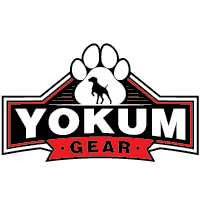Bikejoring is an exhilarating sport that combines biking and dog mushing. It allows both the rider and the canine to enjoy an active, dynamic experience. However, to ensure safety and comfort, selecting the right bikejoring harness for your dog is paramount. This article will guide you through the process of choosing the perfect harness, taking into account various factors such as fit, material, and design.
Understanding Bikejoring
Before diving into the specifics of harness selection, it’s important to understand what bikejoring entails. In bikejoring, a dog is attached to a bike via a towline and a specialized harness. The dog pulls the bike and its rider, providing momentum while allowing the cyclist to steer and control the speed. This sport requires not only the proper equipment but also training and coordination between dog and rider.
Key Factors in Choosing a Harness
1. Fit and Comfort
The harness must fit your dog comfortably without causing chafing or restricting movement. An ill-fitting harness can lead to discomfort or even injuries. To determine the right fit, measure your dog's neck and chest girth. Ensure that the harness is snug but not tight, allowing for free movement of the shoulders and legs. Adjustable straps can be beneficial for achieving a custom fit.
2. Material
The material of the harness is crucial for durability, breathability, and comfort. Look for harnesses made from high-quality, durable materials like nylon or polyester. These materials are strong enough to withstand the pulling force exerted during bikejoring. Additionally, padded sections can prevent rubbing and distribute pressure evenly across the dog's body.
3. Design and Features
The design of the harness should support the dog's natural movement and pulling technique. There are several types of bikejoring harnesses, each with unique features:
- X-back Harness: This traditional design features straps that form an “X” shape across the dog's back, providing even pressure distribution.
- H-back Harness: Similar to the X-back but with a different strap configuration, offering more control and stability.
- Y-back Harness: Often recommended for larger or more powerful breeds, this design provides additional support.
Other features to consider include reflective strips for visibility in low-light conditions and quick-release buckles for easy removal.
Training and Safety Tips
Even with the perfect harness, bikejoring requires training and safety precautions:
- Start with basic obedience training to ensure your dog responds to commands.
- Gradually introduce your dog to the harness and bikejoring setup in a controlled environment.
- Use proper trails and avoid busy or hazardous routes.
- Always carry water and take regular breaks during long sessions.
Conclusion
Choosing the perfect bikejoring harness for your dog involves careful consideration of fit, material, and design. By selecting a harness that ensures comfort and safety, you can enjoy a fun and rewarding bikejoring experience together. Remember that training and patience are key to success in this exciting sport. Happy riding!

